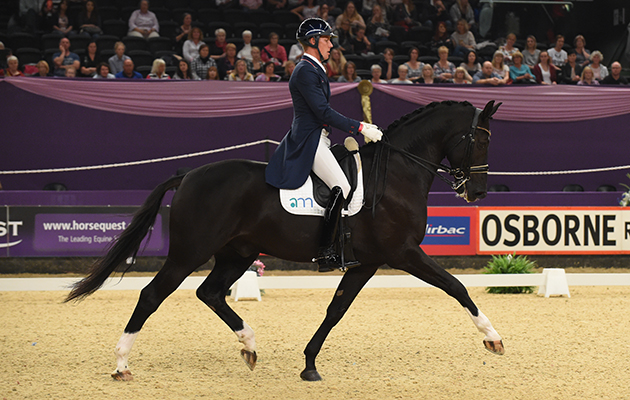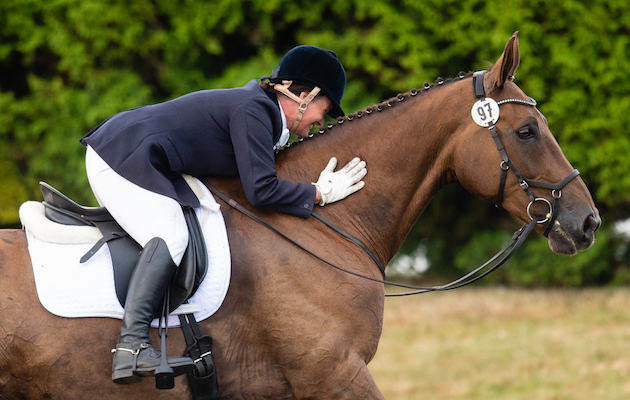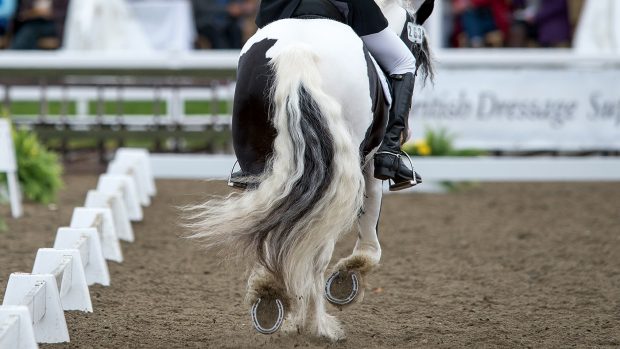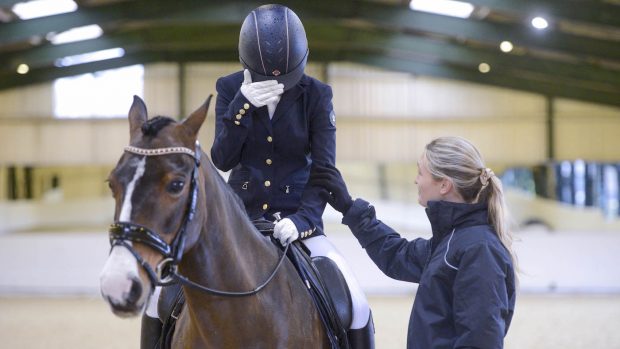We can all get a case of cold feet when it comes to competing and can let it get in the way of having fun and doing our best. In order to help combat those feelings of dread, Emma Shadbolt asks dressage rider Matt Frost to get his top tips on how to stay cool and calm before a show
Make sure you’re ready for the test
Before you enter the class check the content of the test and make sure you are capable of the exercises you will need to perform. Have a run through at home to see if you feel ready – if you’re not quite ready then wait, there is nothing more stressful than over-facing yourself and more importantly your horse. There is always another day.
Make a plan
Start to make your plan as soon as you receive your times. Allow enough time to get your horse ready at home and the lorry packed. We always allow a 15-minute buffer zone before we leave the yard to allow for the unexpected and to double check we have everything. It also stops us rushing around in a mad panic which the horses pick up on. We always work out from a route planner how long it takes to get to the venue and allow an extra 15-30 minutes extra in case of traffic.
We tend to arrive one hour before I’m due to get on to warm up the first horse. This allows time to check the entries board, make sure I’m on the right horse, in the correct class and section, and that I have learnt the right test.
I usually get on a maximum of 45 minutes before my first test. I give the horses a good walk to settle them into their surroundings — even if they are on their toes, 10 minutes’ walking will help to calm them.
With 5-10 minutes to go, we get ready. This involves taking off boots and having a quick glance at the test. The last few minutes before we go in to compete are making sure the horse is focused on me with basic transitions.
I don’t tend to practise the exercises at this stage as it’s too late. Once I have finished my test, no matter how it went, I go back into the arena and cool down by stretching the horse and giving them a good walk off.
Have a ring bag
We always have a bag at the side of the ring. It contains a hoof pick, a leather punch, spare plaiting equipment, a music CD, a towel, some sugar, a water bottle, and test sheets. It also gives you somewhere to put your boots in while you are competing and keeps everything safe and together.
Nerves are good — use them to your advantage
It’s ok to be nervous! Try to turn nervous energy into excitement. You have a responsibility over your horse to give him the best experience possible. Be productive and remember why you are doing it in the first place (for enjoyment, hopefully)!
You might also be interested in:
Rituals and routines are key mindset tools that enable you to switch yourself into performance mode and get into your
Hurrah! The competition season will soon begin in earnest — and the following may well sound familiar to you…

Could rituals and routines boost your competition performance?
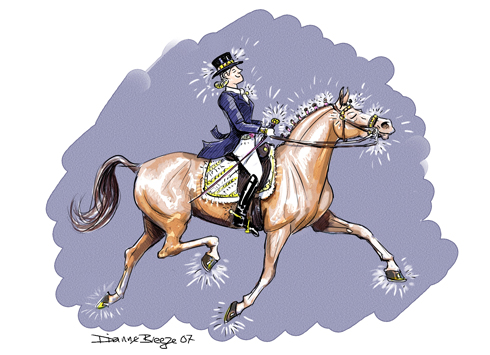
A Thermos flask was your favourite present — and other signs you’re a competition junkie

Subscribe to Horse & Hound this spring for great savings
Horse & Hound magazine, out every Thursday, is packed with all the latest news and reports, as well as interviews, specials, nostalgia, vet and training advice. Find how you can enjoy the magazine delivered to your door every week, plus options to upgrade your subscription to access our online service that brings you breaking news and reports as well as other benefits.

